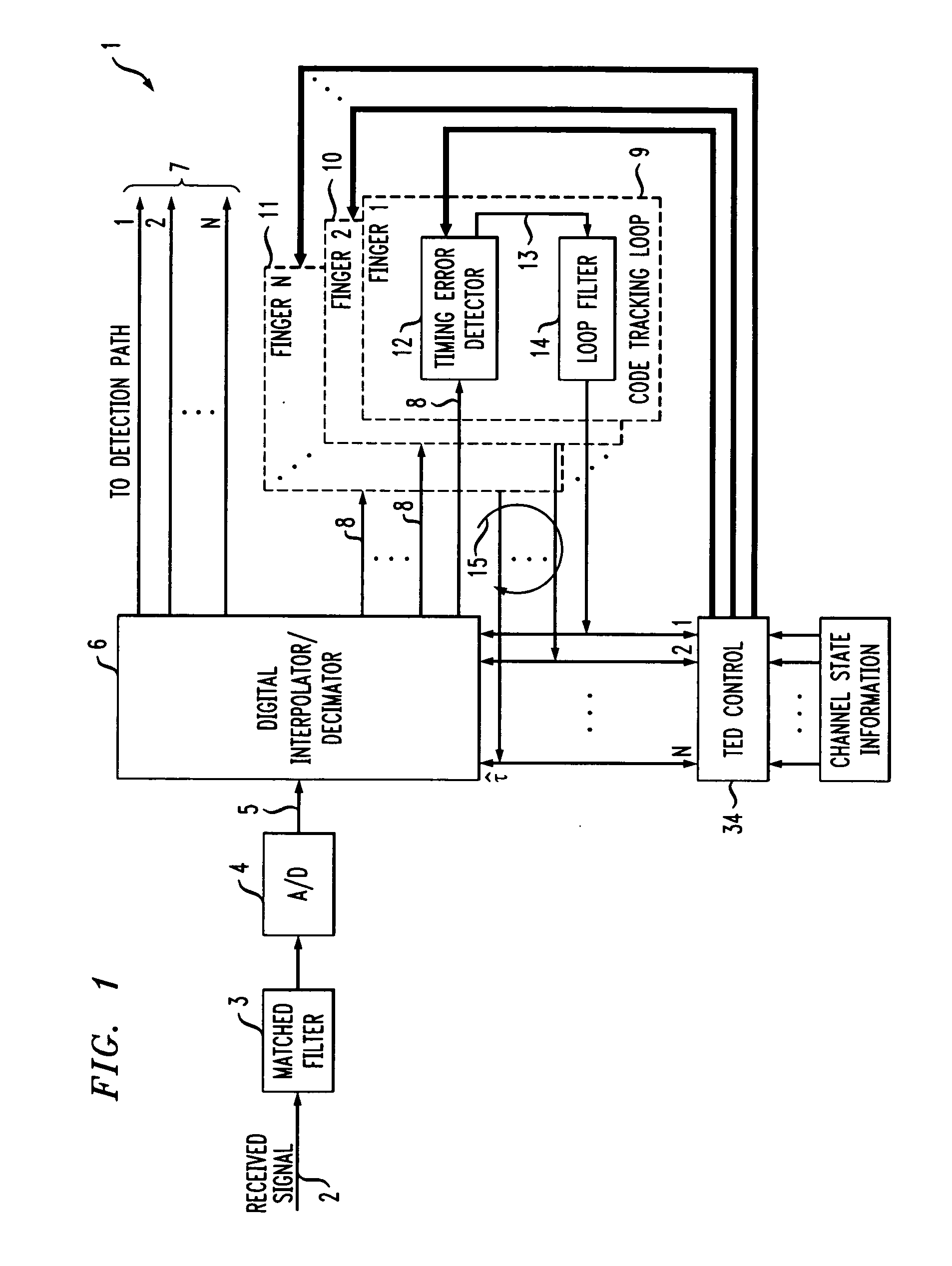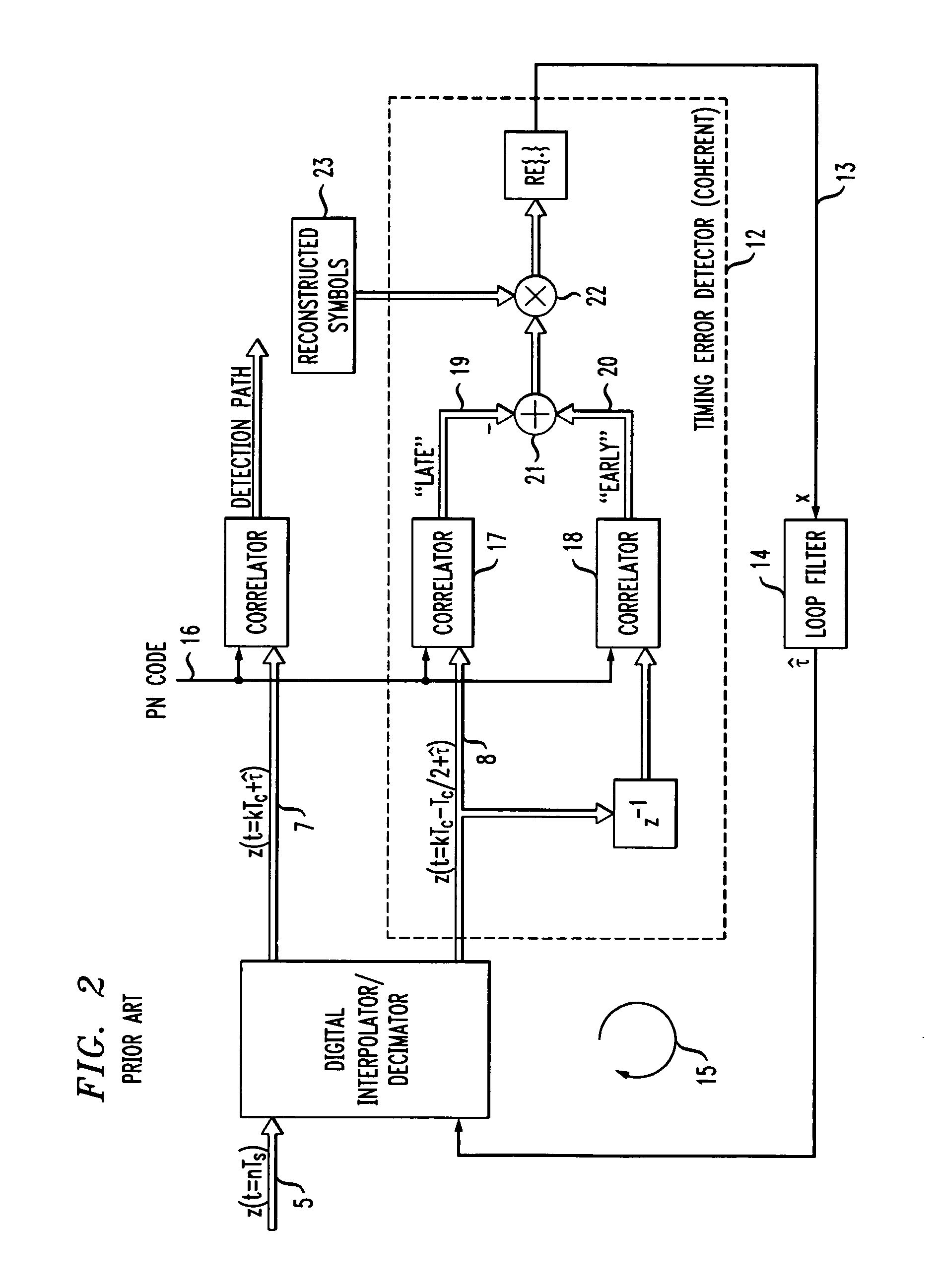Adaptive code-tracking receiver for direct-sequence code-division multiple access (CDMA) communications over multipath fading channels and method for signal processing in a rake receiver
a code-tracking receiver and code-division multiple access technology, applied in the direction of electrical equipment, transmission, etc., can solve the problems of small loss in performance, signal energy dispersed over a certain amount of time, and affect the mobile environment, so as to improve tracking performance
- Summary
- Abstract
- Description
- Claims
- Application Information
AI Technical Summary
Benefits of technology
Problems solved by technology
Method used
Image
Examples
Embodiment Construction
[0035]The invention is explained in more detail and in view of preferred embodiments below where like numerals are designating similar elements in different embodiments of the invention.
[0036]The invention is part of a tracking device for a digital spread-spectrum rake receiver 1 as shown in FIGS. 1 and 16.
[0037]The incoming signal 2 is fed through a pulse matched filter 3, matched to the transmission pulse. An analog-to-digital (A / D) converter 4 generates equidistant samples 5 of the pulse matched filtered signal and feeds them to a digital interpolator / decimator 6, which generates intermediate samples 7, 8 of the same signal at the estimated timing instants {circumflex over (τ)} for each of the N rake fingers 9, 10, 11.
[0038]The interpolated signal is fed to the detection path 7, where the correlation with the PN-code 16 and symbol detection takes place in each finger 9, 10, 11 as shown in more detail FIG. 16 where essentially only the detection path 7 is shown.
[0039]Furthermore, ...
PUM
 Login to View More
Login to View More Abstract
Description
Claims
Application Information
 Login to View More
Login to View More - R&D
- Intellectual Property
- Life Sciences
- Materials
- Tech Scout
- Unparalleled Data Quality
- Higher Quality Content
- 60% Fewer Hallucinations
Browse by: Latest US Patents, China's latest patents, Technical Efficacy Thesaurus, Application Domain, Technology Topic, Popular Technical Reports.
© 2025 PatSnap. All rights reserved.Legal|Privacy policy|Modern Slavery Act Transparency Statement|Sitemap|About US| Contact US: help@patsnap.com



